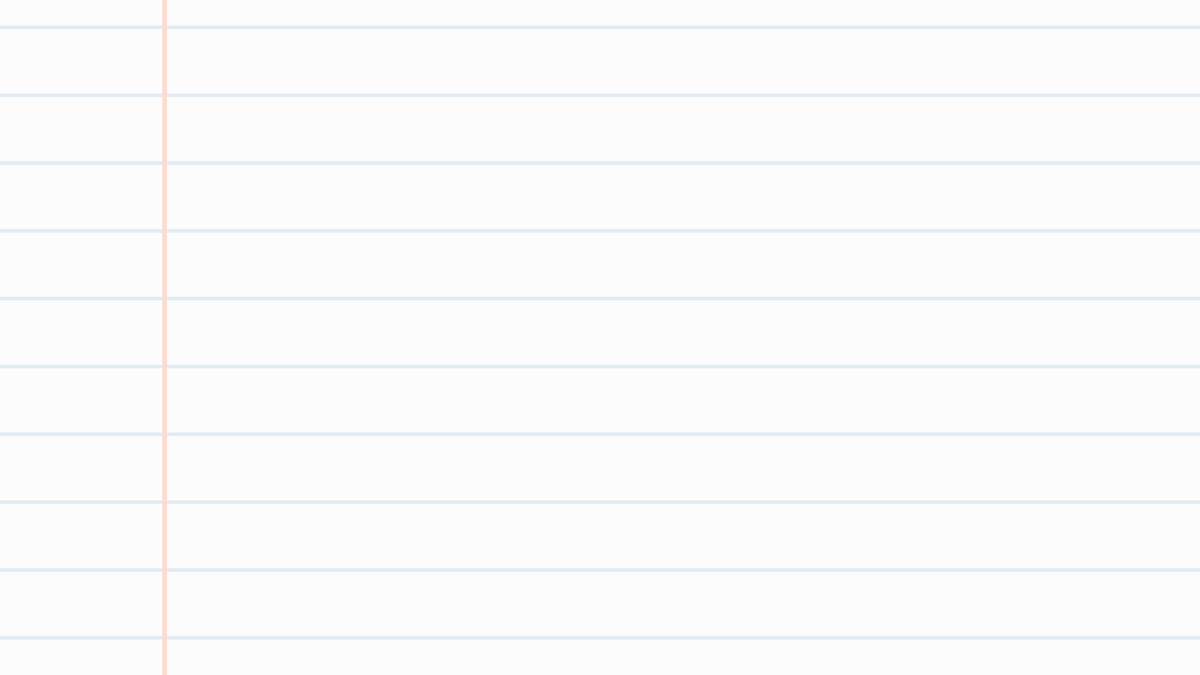Intro.
In Italy, buongiorno is much more than a simple greeting: it's a small social ritual that opens the doors of the day with courtesy, warmth, and good disposition. You hear it in crowded cafés, in offices, in shops, among neighbors who pass each other on the stairs. With a single word, people greet, acknowledge one another, and often wish each other a good day.
From the formal buongiorno to the lighter "giorno!", to the playful buondì, Italian offers nuances that change based on context, familiarity, and the precise moment of the morning.
In this in-depth guide, you'll discover when and how to use "buongiorno", its variants, related expressions, and some useful linguistic notes (such as the difference between giorno and giornata).
Ready? Let's begin... and if you're reading this article in the morning, buongiorno to you!
For a broader overview of Italian greetings and their nuances, we recommend reading our comprehensive guide to Italian greetings.

1. The Italian Good Morning: Buongiorno
Buongiorno is the quintessential Italian morning greeting used during morning hours and the early part of the afternoon, as long as there's full daylight. It's a universal expression that easily adapts to both formal and informal contexts: you can use it when entering an office, greeting a friend, or respectfully addressing a stranger. It can appear both as an initial greeting when entering an environment and as a farewell formula.
Its strength lies precisely in its versatility: with a single word, you communicate politeness, cordiality, and openness. Literally meaning "good day", it carries both a greeting and a positive wish that accompanies the beginning (or continuation) of the day.
The closest English equivalent is Good morning (in the morning hours) or Good afternoon (in the early afternoon hours). In a literal sense, it can also correspond to Good day.
"Buongiorno" is answered with "buongiorno," maintaining the same tone as your interlocutor.
Tone: polite, cordial, versatile.
Examples:
A: Buongiorno, Laura! Caffè al volo?
B: Buongiorno, Claudio! Assolutamente sì!
A: Good morning, Laura! Quick coffee?
B: Good morning, Claudio! Absolutely!
A: Buongiorno, dottoressa Mancini.
B: Buongiorno, Signor Valenti.
A: Good morning, Dr. Mancini.
B: Good morning, Mr. Valenti.
1.1 Giorno! - Informal Morning Greeting
"Giorno!" is the abbreviated version of buongiorno, very common in everyday speech. It's a quick and informal Italian greeting, typical of spontaneous conversations. Its brevity maintains underlying courtesy but with a lighter and more immediate tone, ideal among colleagues, neighbors, or friends who see each other every day.
In English, it corresponds to Morning!, with the same quick and informal tone.
"Giorno" can be answered with "Giorno!", or with a more complete "Buongiorno," or even with "Ciao" in a colloquial tone.
Tone: colloquial, direct, spontaneous.
Examples:
A: Giorno! Già operativo?
B: Giorno! Sì, già da un’ora!
A: Morning! Already at it?
B: Morning! Yes, for an hour already!
A: Giorno, Dario! Come va oggi?
B: Buongiorno, Bea! Giornata tranquilla per ora.
A: Morning, Dario! How’s it going today?
B: Good morning, Bea! Quiet day so far.
A: Giorno, Sara! Pronta per l’allenamento mattutino?
B: Ciao, Vale! Più o meno!
A: Morning, Sara! Ready for the morning workout?
B: Hi, Vale! More or less!
1.2 Buondì - Playful Morning Greeting
"Buondì" is another variant of buongiorno, more sparkling and lively. It sounds almost poetic and retro, like an expression from old letters or novels, but continues to be used with warmth, especially in informal contexts. It's the perfect way to greet with a smile, with a playful note that makes the interaction more vivid.
In English, it corresponds to Good morning, with a lighter and more playful nuance.
"Buondì" is usually answered with "Buondì!", or with a more neutral "Buongiorno!". You can also respond with "Ciao!", maintaining a friendly and spontaneous tone.
Tone: colloquial, playful, cordial.
Examples:
A: Buondì! Oggi finalmente aria di primavera!
B: Buondì! Sì, che bello!
A: Good morning! Finally feels like spring today!
B: Good morning! Yes, it’s lovely!
A: Buondì, Daniela! Oggi ti vedo di buon umore.
B: Buongiorno, Leo! Eh sì, finalmente è venerdì!
A: Good morning, Daniela! You look in a good mood today.
B: Good morning, Leo! Oh yes, it’s finally Friday!
A: Buondì, Michela! Che faccia assonnata!
B: Ciao, Davide. Non ho chiuso occhio…
A: Good morning, Michela! You look so sleepy!
B: Hi, Davide. I didn’t sleep a wink…
2. How to Use Buongiorno: Dire vs Dare
In Italian, you can "dire buongiorno" (say good morning) and "dare il buongiorno" (give good morning). The two expressions are not entirely equivalent: the first simply indicates the linguistic act of pronouncing the word "buongiorno," while the second emphasizes the courteous gesture of addressing someone with attention and respect. "Dare il buongiorno," in fact, has almost the value of a small verbal gift: it's a sign of good manners that contributes to creating a more cordial and welcoming atmosphere. In this sense, beyond being a greeting, buongiorno also becomes a way to establish greater contact with your interlocutor.
In English, these expressions correspond to To say good morning (dire "buongiorno") or To wish someone good morning ("dare il buongiorno", with the idea of offering a wish).
Examples:
Appena entro in ufficio, dico sempre “buongiorno” a tutti.
As soon as I get into the office, I always say good morning to everyone.
Quando arrivi, ricordati di dare il buongiorno alla reception.
When you arrive, remember to wish the receptionist good morning.
3. Italian Proverb: Il Buongiorno Si Vede Dal Mattino
The word buongiorno appears both as a greeting and within Italian sayings and proverbs. This demonstrates how deeply rooted it is in daily communication and cultural imagination.
Among the most well-known expressions is: "Il buongiorno si vede dal mattino!" (You can tell a good day from the morning!). It's much more than a simple play on words: it represents a true daily philosophy. The expression suggests that the course of an entire day can be intuited from the very first moments: if you start on the right foot, everything is likely to continue the same way.
The proverb, however, goes beyond the simple day and becomes a metaphor for every type of beginning: a project, a relationship, a job, or even a journey. A good start is often perceived as a guarantee of a good result.
The expression can also be used ironically, when the day (or an activity) doesn't start in the best way and you want to point it out with sarcasm and at the same time with lightness.
In English, it corresponds to The morning shows the day or, more freely, A good start makes a good day.
Tone: proverbial, wise, optimistic.
Examples:
Abbiamo trovato subito un’ottima intesa nel team: il buongiorno si vede dal mattino!
We immediately found great harmony in the team: a good start makes a good day!
Oggi ho bucato una gomma e perso le chiavi di casa: il buongiorno si vede dal mattino…!
Today I got a flat tire and lost my house keys: the morning shows the day…!

4. Buona Giornata: Italian Farewell Expression
Buona giornata is one of the most widespread Italian farewell expressions in daily Italian life. It's a way to say goodbye and at the same time a sincere wish that accompanies the person for all the remaining time of the day. It's a graceful and warm choice, suitable for both professional relationships and more informal interactions. Its simplicity contains a gesture of attention that contributes to making the farewell more personal. If the farewell takes place late in the day, it's common to add the variant "buon proseguimento di giornata" (have a good rest of the day), to make the wish even more targeted.
In English, this formula usually corresponds to Have a nice day or Have a good day.
Those who receive this greeting can respond with a simple thank you, for example "Grazie, anche a te/lei!" (Thanks, same to you!), or by reciprocating the wish with "Buona giornata anche a te!" (Have a good day to you too!).
Tone: courteous, warm.
Examples:
A: Grazie per la disponibilità, buona giornata!
B: Grazie, anche a lei!
A: Thank you for your availability, have a good day!
B: Thank you, have a good day to you too!
A: Grazie dell’informazione. Buona giornata!
B: Di nulla, buona giornata anche a te!
A: Thanks for the information. Have a good day!
B: No problem, have a good day to you too!
4.1 Giorno vs Giornata: Understanding the Difference
To understand well the difference between buongiorno and buona giornata, it's useful to distinguish the two terms that compose these two forms of greeting: giorno and giornata.
The term giorno is neutral and indicates a unit of time (the 24 hours) or a precise date on the calendar. It's the word we find in the greeting buongiorno, which maintains a simple and universal tone.
The word giornata, however, emphasizes the unfolding of time and the sensations it brings with it: it doesn't just measure hours, but describes their quality. This is why saying "buona giornata" conveys a more empathetic and warm wish, because it recalls the experience lived throughout the course of the day.
Example:
Oggi è il giorno dell’esame. (momento preciso, legato a un evento)
Today is the day of the exam. (specific moment, tied to an event)
È stata proprio una bella giornata! (valutazione dell’esperienza)
It’s really been a beautiful day! (evaluation of the experience)
4.1.2 Common Expressions with Giornata in Italian
The word giornata is often used also in phrases that express a judgment on the time lived or a wish directed to someone else.
Here are three very common uses:
• È una buona giornata
This phrase describes a positive perception of the time you're living: it can refer to favorable weather, events that went well, or simply a serene state of mind.
In English, it corresponds to It's a good day.
Tone: positive, descriptive.
Examples:
Il sole splende e tutto fila liscio: è una buona giornata.
The sun is shining and everything is going smoothly: it’s a good day.
Oggi mi sento pieno di energia, è davvero una buona giornata!
Today I feel full of energy, it’s really a good day!
• Non è una buona giornata
It's used to express a negative evaluation of the day, linked to unexpected events, stress, or bad mood. The expression can concern both reasons linked to external conditions and communicate a personal state of discomfort.
In English, it corresponds to It's not a good day.
Tone: negative, descriptive, sometimes ironic.
Examples:
Piove da stamattina e il computer ha smesso di funzionare: direi che non è una buona giornata!
It’s been raining since this morning and my computer stopped working: I’d say it’s not a good day!
Oggi non mi sento molto bene, non è una buona giornata.
Today I don’t feel very well, it’s not a good day.
• Ti auguro una buona giornata
This expression shifts the emphasis from personal experience to interaction with the other. It's a well-wishing greeting that shows attention and courtesy, often used at the end of a conversation or work discussion.
In English, it corresponds to I wish you a good day or, more commonly, Have a nice day.
Tone: courteous, warm.
Examples:
Grazie per l’aiuto, ti auguro una buona giornata.
Thanks for your help, I wish you a good day.
È stato un piacere parlare con te, ti auguro una buona giornata.
It was a pleasure talking to you, have a nice day.
5. Italian Time-of-Day Greetings: Mattino, Mattina, Pomeriggio
If giorno (day) indicates the entire arc of twenty-four hours, Italian offers more specific words to distinguish different moments like mattino/mattina (morning) and pomeriggio (afternoon). These terms serve to organize time and appear in the use of greetings and wish formulas.
Mattino and mattina have the same meaning and indicate the first part of the day, but in greeting formulas they're not used in the same way. Mattina, from which mattinata (morning hours) derives, is the form that appears in greeting formulas and wishes like buona mattinata (have a good morning), which is typically used as a farewell formula in the early hours of the day. The word mattino, however, is not used in greetings. We find it mainly in fixed phrases like "Di buon mattino" (Early in the morning), which means "early," "in the first hours of the day," or in expressions like "Al mattino" (In the morning), used to indicate habits or recurring actions in the first part of the day (example: Al mattino bevo sempre un caffè - In the morning I always drink coffee).
For the second part of the day, we find pomeriggio (afternoon), which is found in greetings in the formula "Buon pomeriggio" (good afternoon). It can be used upon arrival, although it's uncommon, while it's more natural as a farewell formula, especially in professional contexts, where it gives the conversation a respectful and elegant tone.
To the greeting formulas Buona mattinata and Buon pomeriggio, you can respond with "grazie" followed by the reciprocal wish ("Grazie, anche a lei/te!" -Thanks, same to you!) or simply by reciprocating the wish ("Buona mattinata/Buon pomeriggio anche a te!" - Have a good morning/afternoon to you too!). In English, they correspond respectively to Have a good morning and Have a good afternoon.
Tone: courteous, warm, kind.
Examples:
A: Scappo, buona mattinata!
B: Grazie, anche a te!
A: Gotta run, have a good morning!
B: Thanks, you too!
A: Devo andare, ci sentiamo domani. Buon pomeriggio!
B: Buon pomeriggio anche a te!
A: I’ve got to go, talk to you tomorrow. Good afternoon!
B: Good afternoon to you too!
A: Buon pomeriggio a tutti e benvenuti alla conferenza.
A: Good afternoon everyone and welcome to the conference.
6. Bella Giornata: Beautiful Day Expressions in Italian
Beyond the more codified greetings, in Italian we find many expressions linked to "bella giornata" (beautiful day), in which the adjective bella refers to the positive quality of a moment or experience.
Among these expressions:
• Augurare una bella giornata
The formula "Ti auguro una bella giornata" is a warmer and more personal variant of "Buona giornata". It's a wish that highlights the desire that the time to come be positive.
In English, it corresponds to I wish you a beautiful day or, more commonly, Have a beautiful day.
To this expression, people usually respond by reciprocating the wish, with phrases like "Grazie, anche a te" (Thanks, you too) or "Grazie, altrettanto" (Thanks, same to you), maintaining the same cordial register.
Tone: warm, personal, affectionate.
Examples:
A: Grazie dell’aiuto, ti auguro una bella giornata!
B: Grazie, anche a te!
A: Thanks for the help, I wish you a beautiful day!
B: Thanks, you too!
A: Ecco a lei il resto. Le auguro una bella giornata!
B: Grazie, altrettanto!
A: Here’s your change. I wish you a beautiful day!
B: Thanks, same to you!
• Trascorrere una bella giornata / delle belle giornate
Saying "Ho trascorso una bella giornata" (I spent a beautiful day) means giving a positive evaluation of the time spent. In the plural, "belle giornate" beautiful days), this meaning extends to a longer period of time, like a vacation or several days spent together with someone.
Examples:
Abbiamo trascorso davvero una bella giornata al mare.
We had a really lovely day at the beach.
Ho trascorso belle giornate, ricche di momenti indimenticabili.
I had lovely days, filled with unforgettable moments.
• Arrivano le belle giornate
The expression "Arrivano le belle giornate" (The beautiful days are coming) usually refers to the weather, to the arrival of spring or summer, when days become brighter and more pleasant. It's a way to transmit optimism and good mood.
Examples:
Finalmente arrivano le belle giornate, non vedevo l'ora!
Finally the beautiful days are coming, I couldn't wait!
Arrivano le belle giornate, dobbiamo organizzare un picnic!
The beautiful days are coming, we should plan a picnic!

7. Portare i Saluti: Sending Greetings in Italian
A further nuance of courtesy is found in formulas that allow you to entrust an indirect greeting. Telling someone "Porta i miei saluti a…" (Give my regards to...) your mother, your father, etc., means extending your attention beyond the present interlocutor. It's a form of kindness that strengthens bonds, demonstrating care even for those who aren't physically there. This habit is very rooted in Italian culture, where greetings are considered true tools of social relationship.
In English, the most common correspondence is Say hello to or Give my regards to, depending on the degree of formality.
Those who receive the indirect greeting can respond with phrases like "Grazie / Con piacere, riferirò (i tuoi saluti)" (Thanks / With pleasure, I'll let them know).
Tone: kind, respectful, cordial.
Examples:
Se vedi Luca, portagli i saluti da parte mia.
If you see Luca, give him my regards.
A: Per favore, porta i miei saluti a tua madre.
B: Con piacere, riferirò!
A: Please, say hello to your mother for me.
B: With pleasure, I'll let her know!
Conclusion
Buongiorno is much more than a greeting: it's a bridge of courtesy that unites people, a small daily gesture that carries with it warmth, attention, and even a wish. Through its lighter variants (Giorno!, Buondì), the proverbs that include it (Il buongiorno si vede dal mattino), or related farewell formulas like Buona giornata, this word reflects well the spirit of Italian communication: direct but welcoming, simple but rich in nuances.
Learning to use buongiorno and its related expressions means mastering a basic term and entering more deeply into Italian culture, made of relationships, cordial gestures, and attention toward others.
And so... buongiorno to you, may you have a buona giornata or, why not, tante belle giornate!

Adriana Rossi is a certified teacher of Italian as a foreign language from Rome, Italy, and has been part of the Giulia team since 2024. With a Modern Literature degree and advanced studies in Modern Philology, she specializes in tracing the origins and evolution of Italian words, bringing expertise in diction and expressive reading to help preserve and share Italy’s linguistic heritage with learners worldwide.





